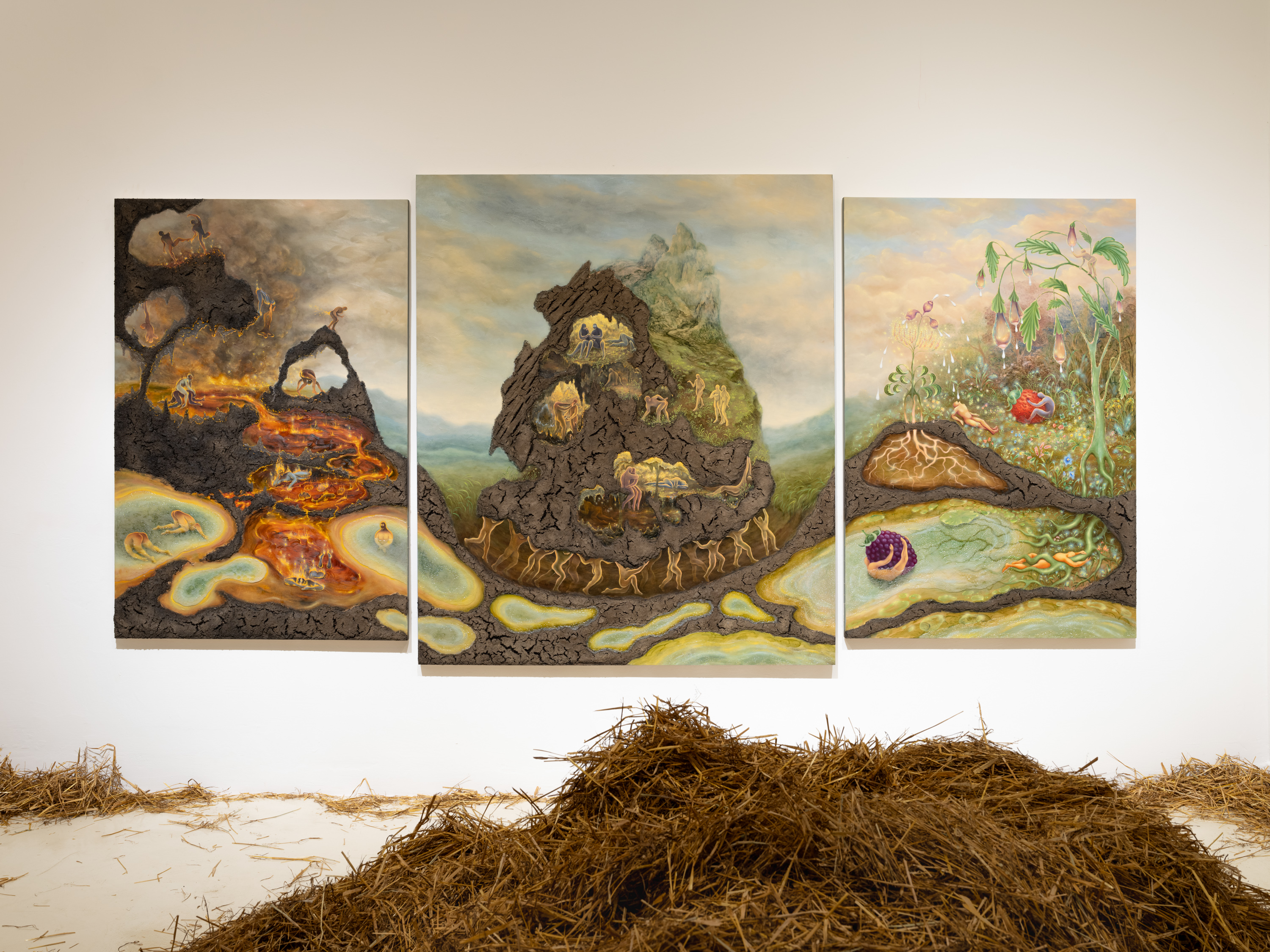
LETO Gallery
09.2024, Warsaw Gallery Weekend
kuratorka Ania Batko
PL
Marcin Janusz, Mleczne Ciałka
this flesh is so smooth, so milky, so unblemished, so good, so slippery, so handsome, so tender. Yet the time will come... when this flesh, dear boyish flesh, will be worthless... be not slow to yield to an eager lover (Marbodius, ok 1100 r.)
Tysiąc lat ciemności. Średniowiecze kojarzy się z religijnym fanatyzmem, ignorancją i zacofaniem, krucjatami i heretykami palonymi na stosie, dogmatami i zabobonami. Problem w tym, że wieki ciemne to wynalazek renesansu i historia, którą stworzyła dla nas oświecona nowoczesność. I napisała ją tak, żeby sama sobie wydać się wybawieniem. Bliższe prawdzie zdaje się spojrzenie na średniowiecze jak na czas ścierania się różnych idei i koncepcji, które nie tylko toczą ze sobą podskórną wojnę, ale też często istnieją obok siebie na równych prawach. Pogańskie rytuały mieszają się z chrześcijaństwem, a anatomia i biologia przenika się z ludową wyobraźnią. Nie odrzuca się przyjemności. Seksualność nie jest jeszcze nawet przypisana do ciała. I chociaż jak pisze Foucault religia sprawia, że grzeszność manifestuje się w formie wyznania i pokuty, to seksualne zakazy i represje pojawią się później. To jak chce Foucault, ale też John Boswell jeszcze jeden produkt kapitalizmu. Taki sam jak monopol władzy na prawdę.
Mleczne ciałka nie interesują się wielkimi narracjami. Zresztą nigdy ich nie tworzyły. Żyją poza systemem i dominującym dyskursem. Fascynują je mikrohistorie, anegdoty i legendy, wszystko to co rozsadza homogeniczną wizję i produkuje upragnione momenty ulgi. Są trochę jak drollerie, groteskowe rysunki malowane na marginesach iluminowanych kodeksów. Mowa o slapstickowych scenkach i śmieszno-straszne hybrydach, ludzikach ujeżdżających penisy i wypinających tyłki albo królikach ćwiartujących gotyckich rycerzy i gotujących ich w wielkim kotle. Żart, makabra i abiekt. Czasem tym rysunkom towarzyszą też notatki - wyznania skrybów: „atrament jest rzadki” albo „na litość boską: dajcie mi pić”. W ich świecie nikogo nie dziwi to, że odcięta głowa może nagle zrosnąć się z ciałem, ręka wisielca pali się niczym świeca, penisy rosną na drzewach, zakonnice zbierają je jak owoce z drzew, a flatuliści mają taką kontrolę nad jelitami, że pierdząc wygrywają na nich całe melodię. To czasy, w których wierzy się, że Ziemia przypomina wielki ser pożerany przez robaki, dusza przybita jest do ciała malutkimi gwoździami, a gnijące siano kojarzy się w takim samym stopniu z walką o władzę, jak i miłosnymi igraszkami. Marzy się też o podróży. Na przykład do mitycznej Kukanii, miejsca w którym nikt nie jest głodny i wszyscy są szczęśliwi. W krainie pieczonych gołąbków mosty zrobione są z cukru, w rzekach zamiast wody płynie wino, a z drzew zwisają pęta kiełbasy. Nie ma tu władzy, moralności, hierarchii. Wbrew pozorom nie mamy tu do czynienia z innym światem, ale jego inną mapą.
Tu ciała pożyczają sobie tożsamości i żonglują ich opowieściami, parodiują relacje władzy i grają karnawałową wizją świata na opak. Lepią swoją własną wersję historii i są queerowe, nawet jeśli jeszcze nie wiedzą co to znaczy. Ba, nie mogą sobie tego nawet wyobrazić. Opowiadają o langwedockim słowie „gay/goia”, które kiedyś kodowało rozkoszowanie się językiem, radość i wolność podróżujących trubadurów, związkach braterskich zawieranych w formie umowy przez osoby tej samej płci, które dzieliły z sobą chleb, wino i sakiewkę i homoerotycznej poezji mnichów afirmującej piękne i delikatne ciała ich platonicznych kochanków. Zresztą klasztor jawi się tu jako miejsce seksualnej wolności. Może nie bez powodu „Wóz z sianem” Hieronima Boscha, który jak pisze Wilhelm Fraenger należy czytać jako transowe doświadczenie społecznej utopii czy inspirowany heretyckimi rytuałami nagich Adamitów i Adamitek „Ogród rozkoszy ziemskich”, powstały właśnie na zamówienie klasztoru. I może nie bez powodu w powieści Rebelaisa, której pierwowzorem była średniowieczna legenda o olbrzymie zjadającym świat, utopią okazuje się właśnie opactwo.
Groteskowy Gargantua, którego nieposkromiony apetyt koduje krytykę nadmiaru i obnaża hipokryzję władzy, po wygranej wojnie, buduje Thélème. Jedyną regułą klasztoru jest: ”rób co chcesz”. To miejsce bez przymusów i ograniczeń. I co znaczące, bez murów. Na marginesie biblijna historia o Sodomie zanim stała się pretekstem do seksualnych represji czytana była przede wszystkim w kontekście zamknięcia i społecznej izolacji. Jej głównym grzechem nie była niemoralność, ale właśnie niegościnność jej mieszkańców. Jak chce Gargantua: lepiej żeby ludzie myśleli, że jestem martwy, niż żeby myśleli że jestem głodny.
***
Tytuł wystawy zapożyczony został z poematu Marbodiusa dla którego pragnienia nie są grzeszne. Jeszcze. Średniowieczny mnich i biskup Rennes oficjalnie potępiał stosunki seksualne które nie służyły prokreacji, jednocześnie jednak w poezji dawał upust swoim homoerotycznym fantazjom - adorował piękno męskiego ciała i celebrował własne pożądanie.
Na wystawie pokazujemy m.in. tryptyk z surrealistycznymi wizjami raju, piekła i Ziemii, inspirowany groteską witraż i cykl obrazów, które pozwalają się czytać podobnie jak opowieść o żarłocznym Gargantui, jako parodia mitu - podróży w poszukiwaniu innego życia i jednocześnie krytyka społeczno-politycznego porządku. Wszystko to przysypane jest sianem symbolizującym boschowską walkę o władzę. Zmiennokształtną materią, która jak chce ludowa tradycja posiada magiczną moc – odgania złe duchy, chroni, chowa i odsłania. Zawiera w sobie pamięć ciała i ciałek.
Tekst: Ania Batko
zdjęcia: Bartosz Górka
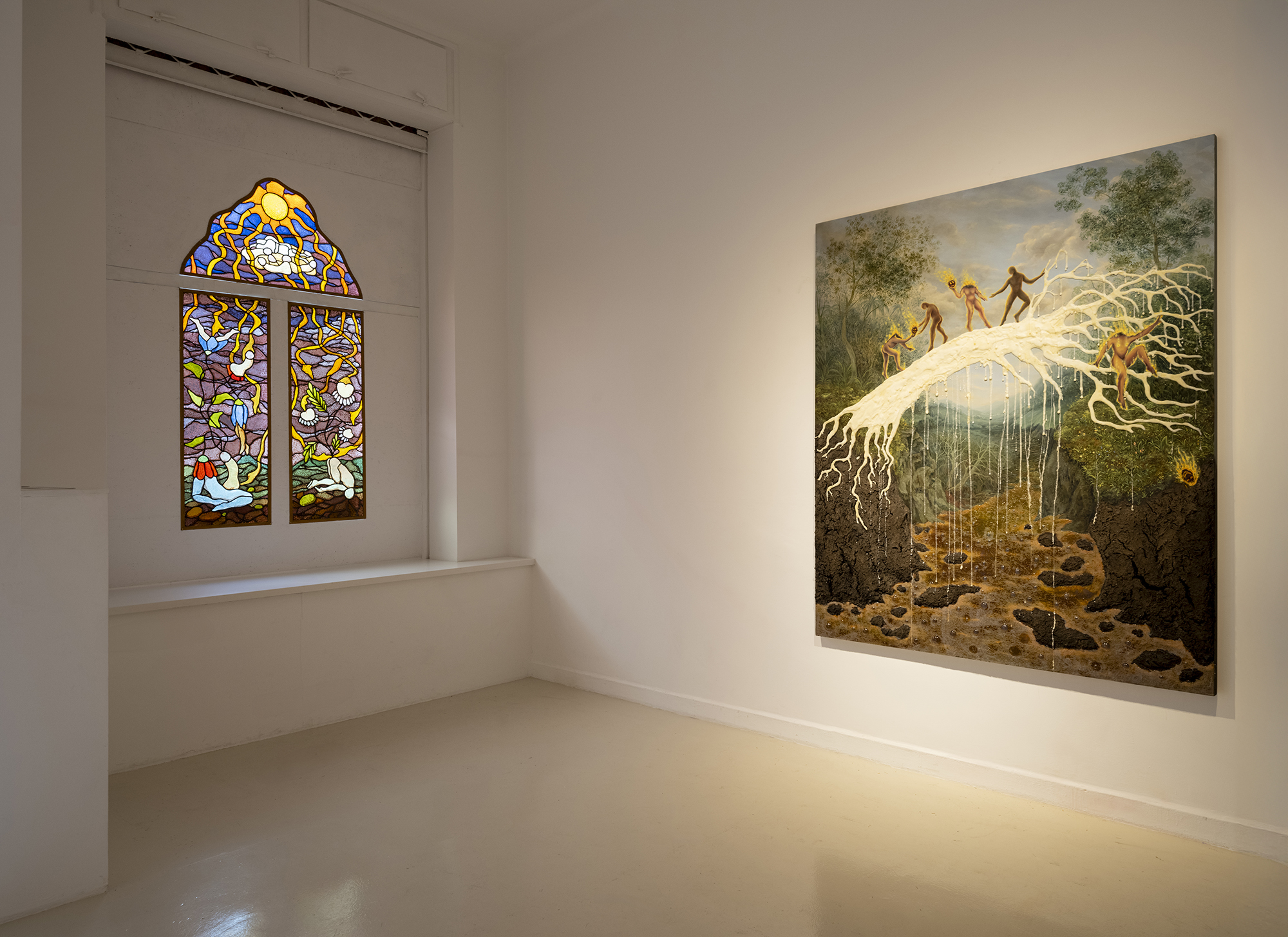
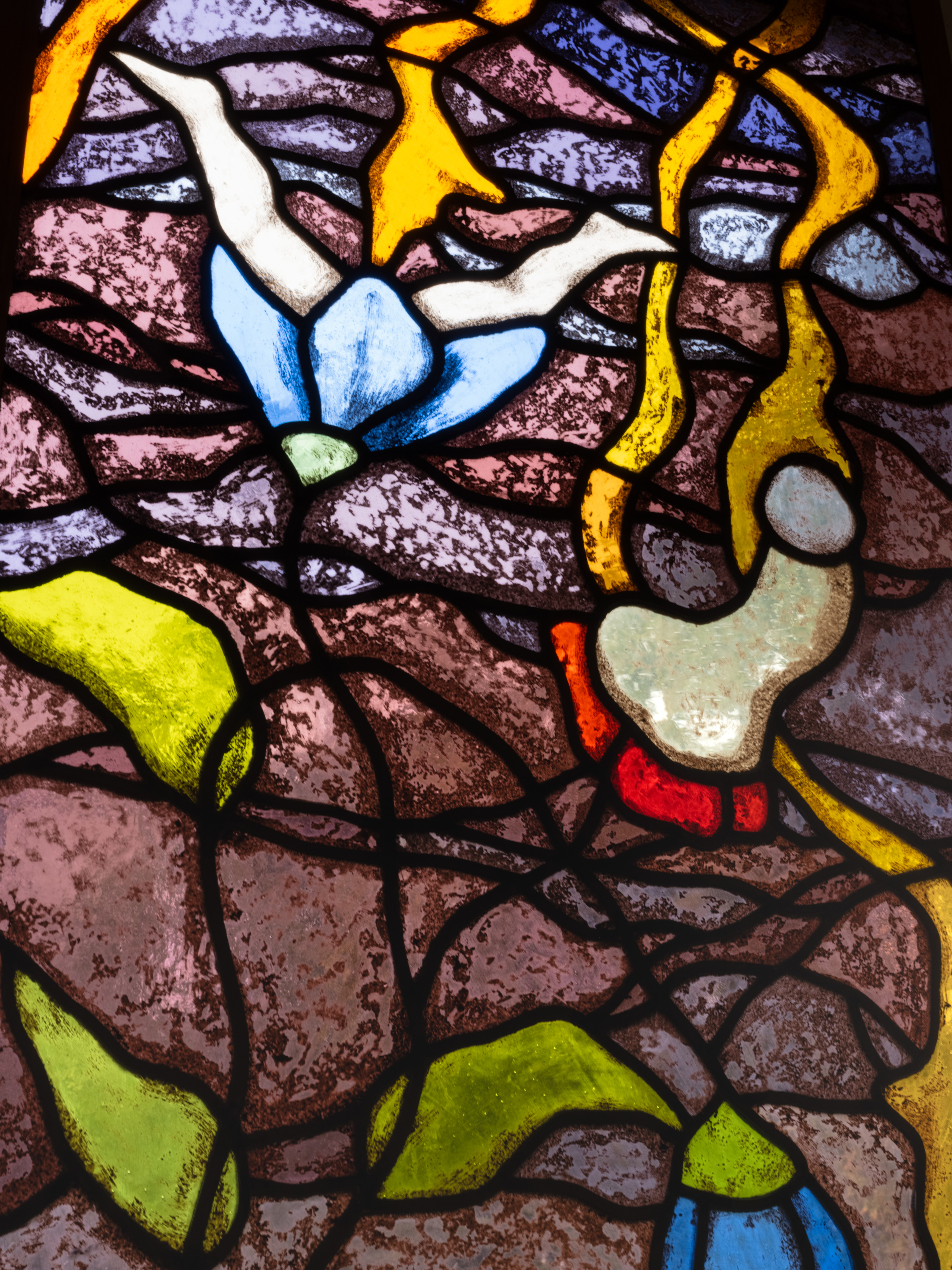
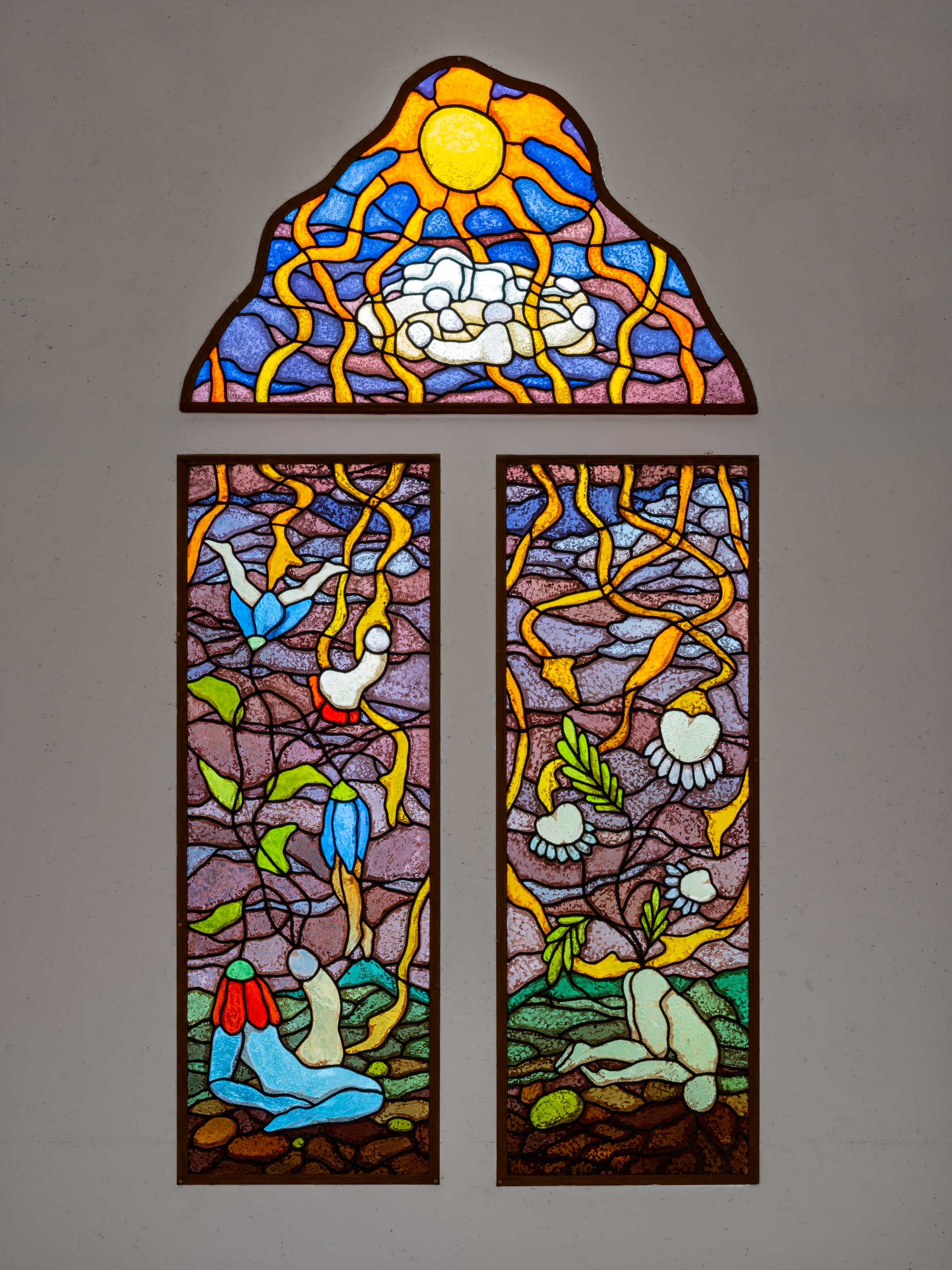

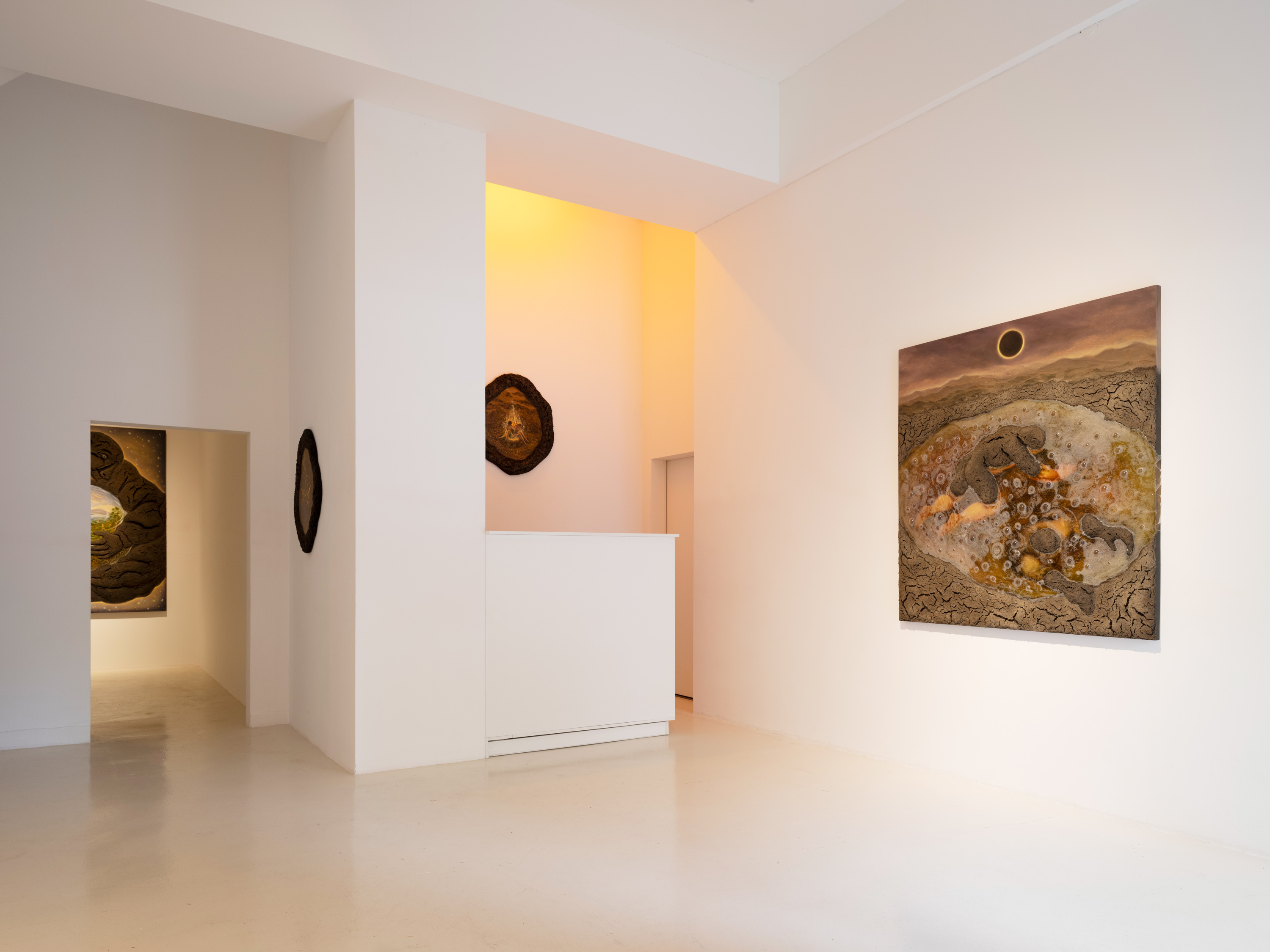
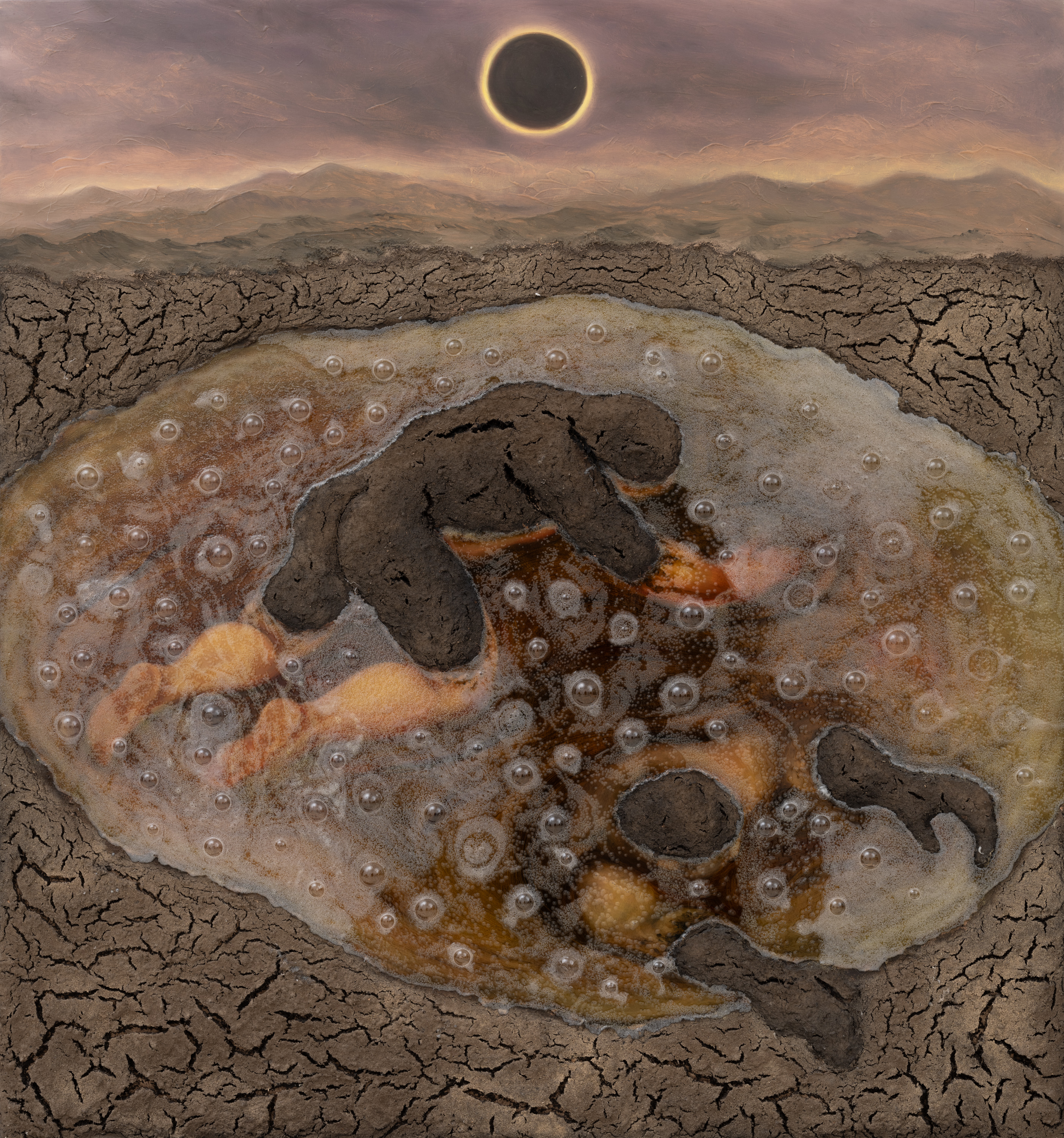
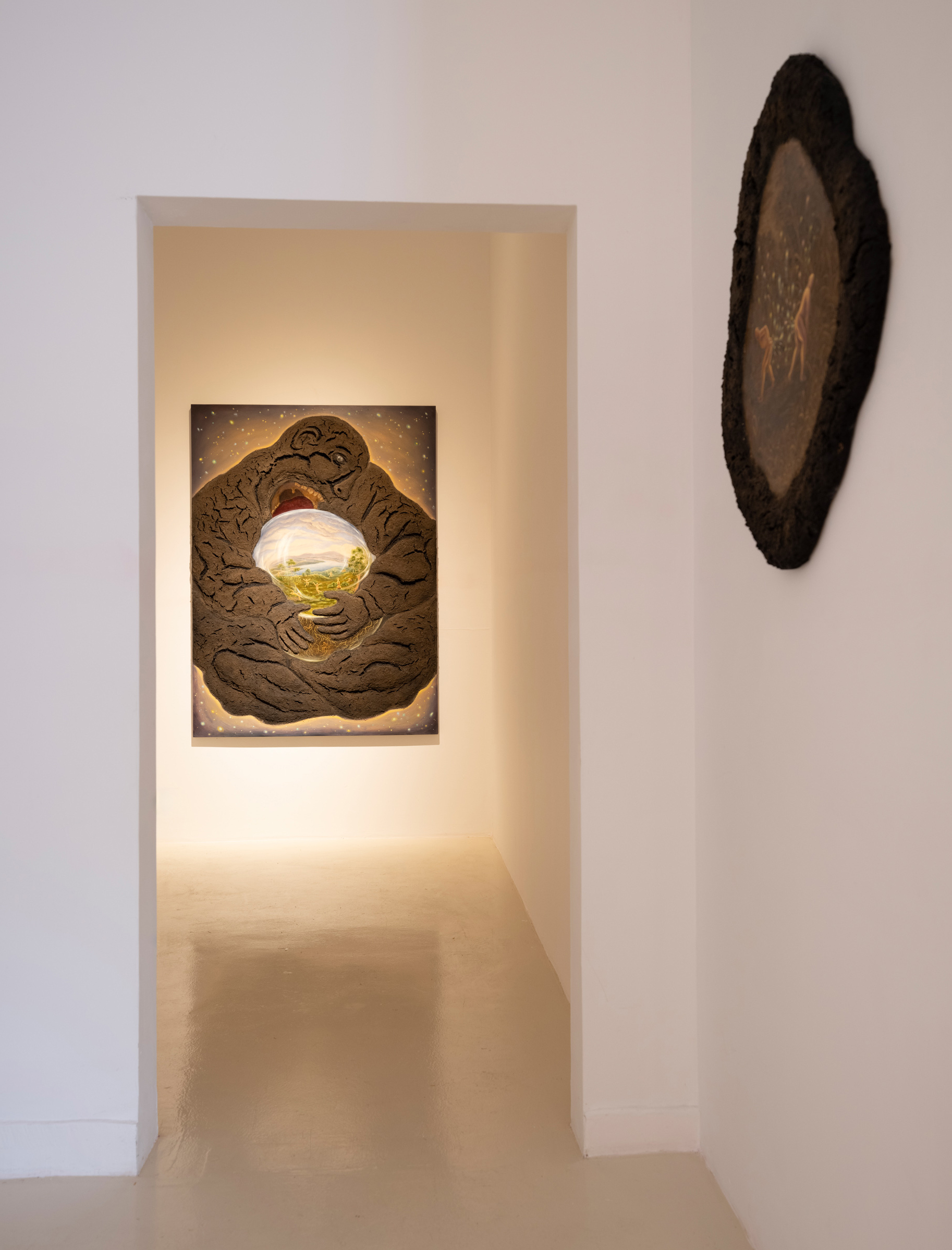
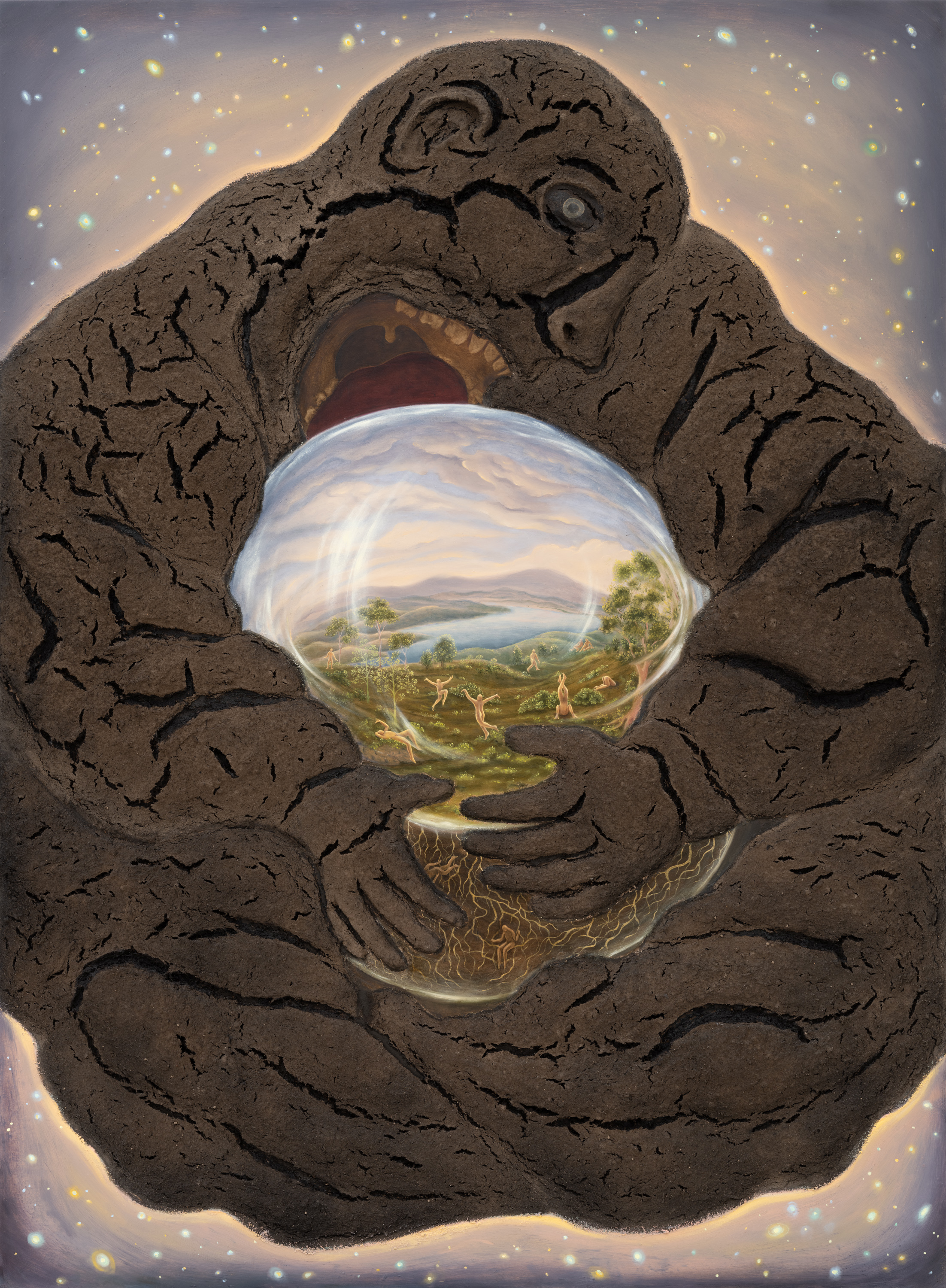
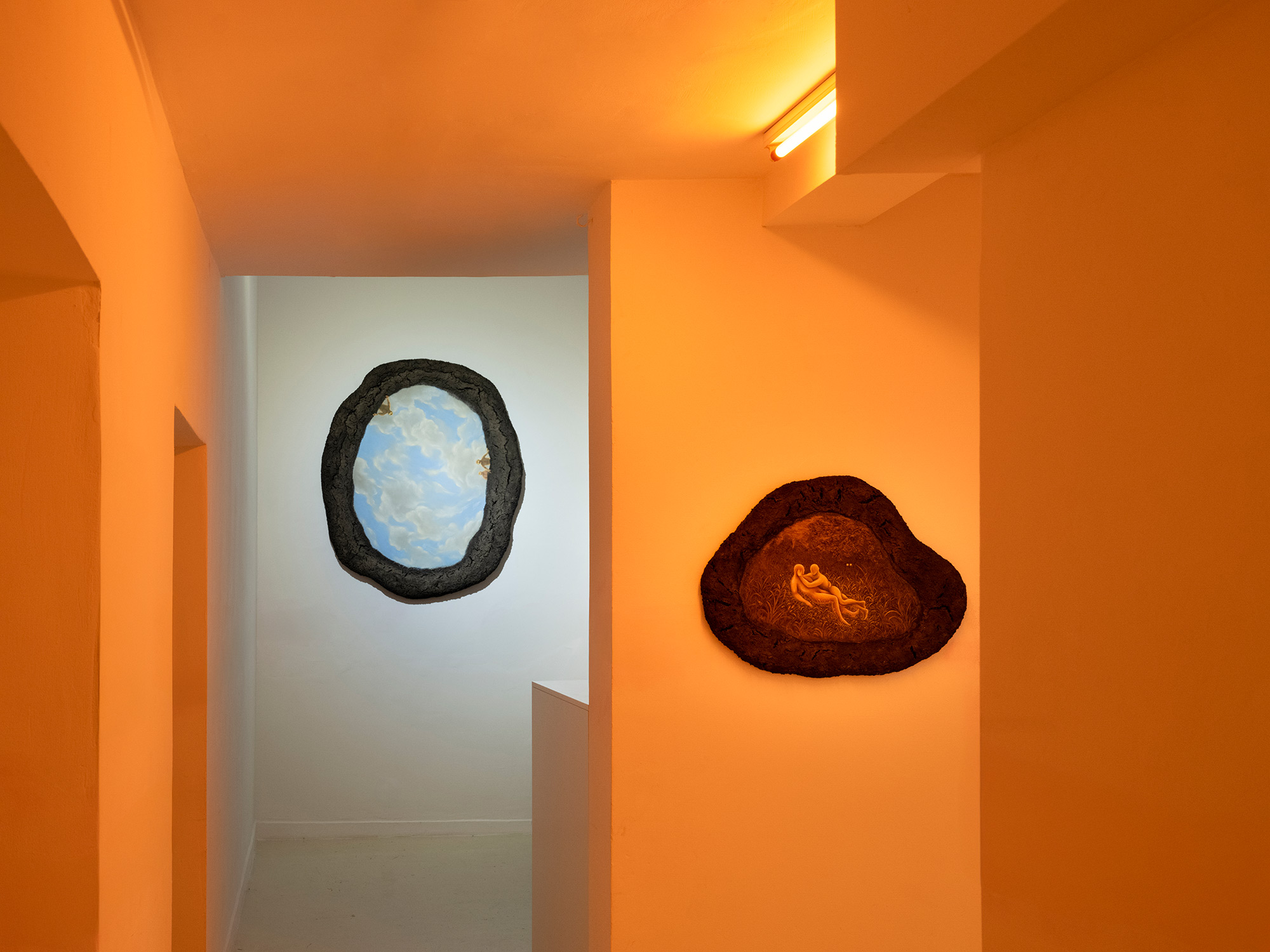
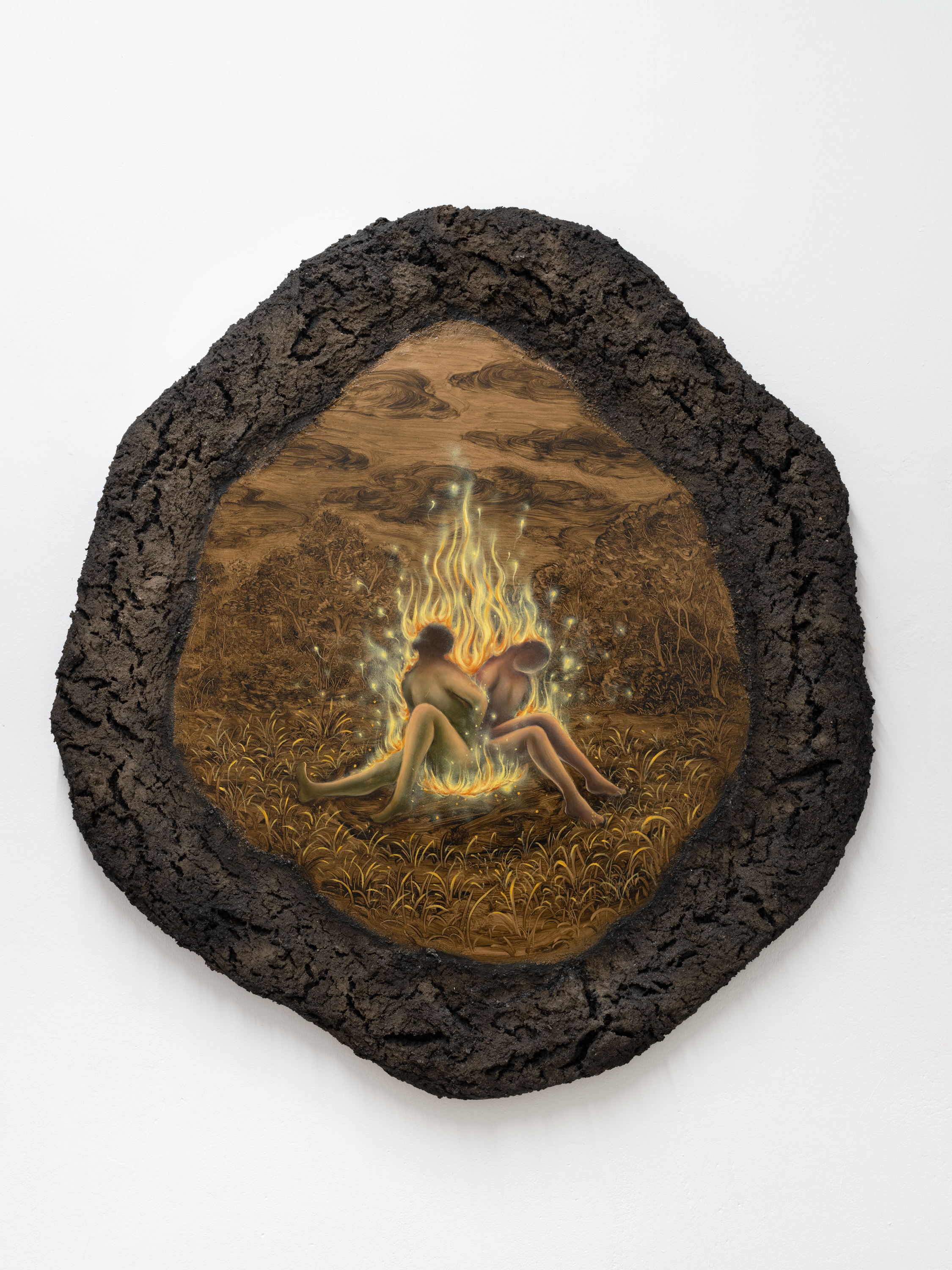
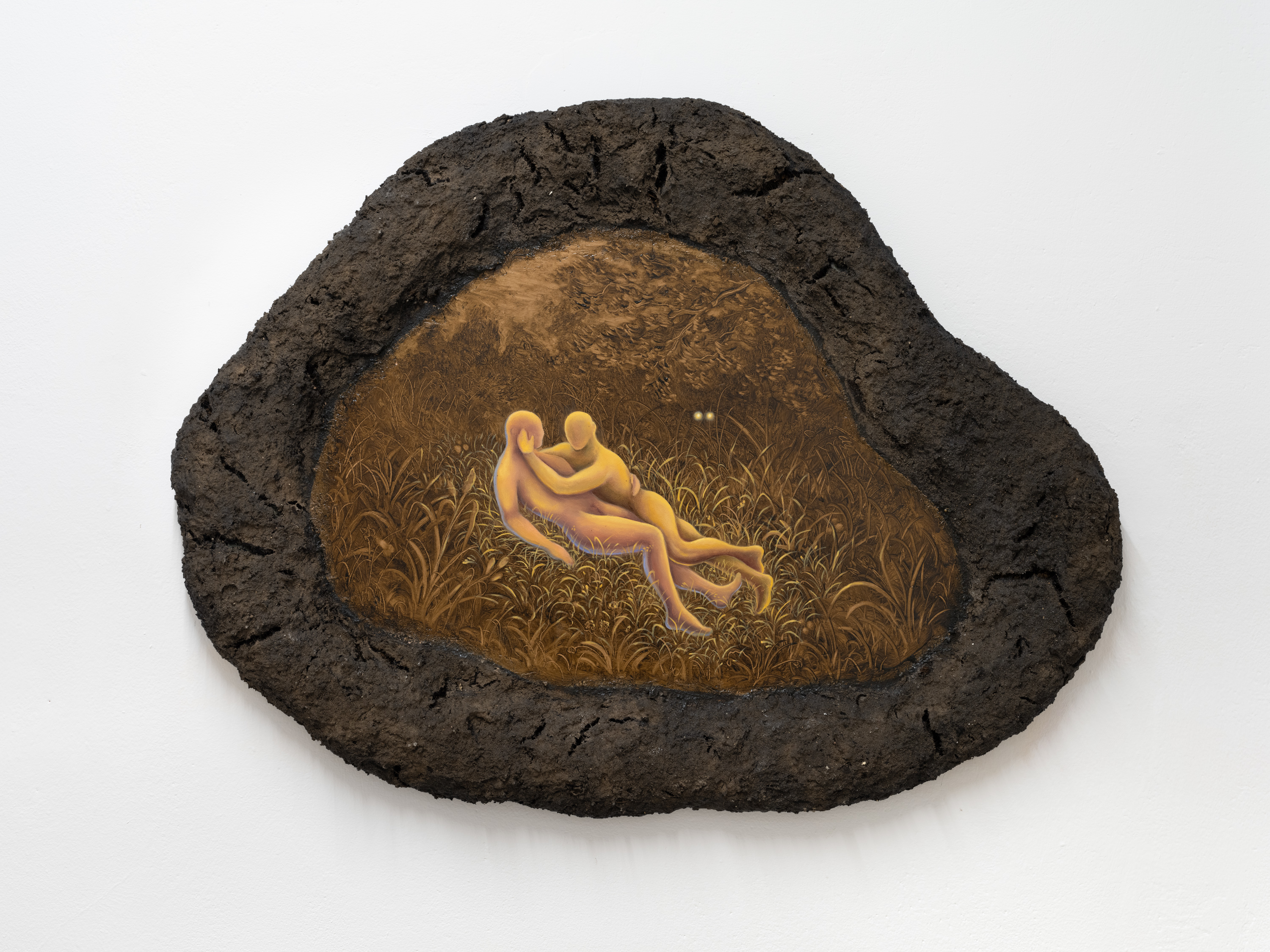
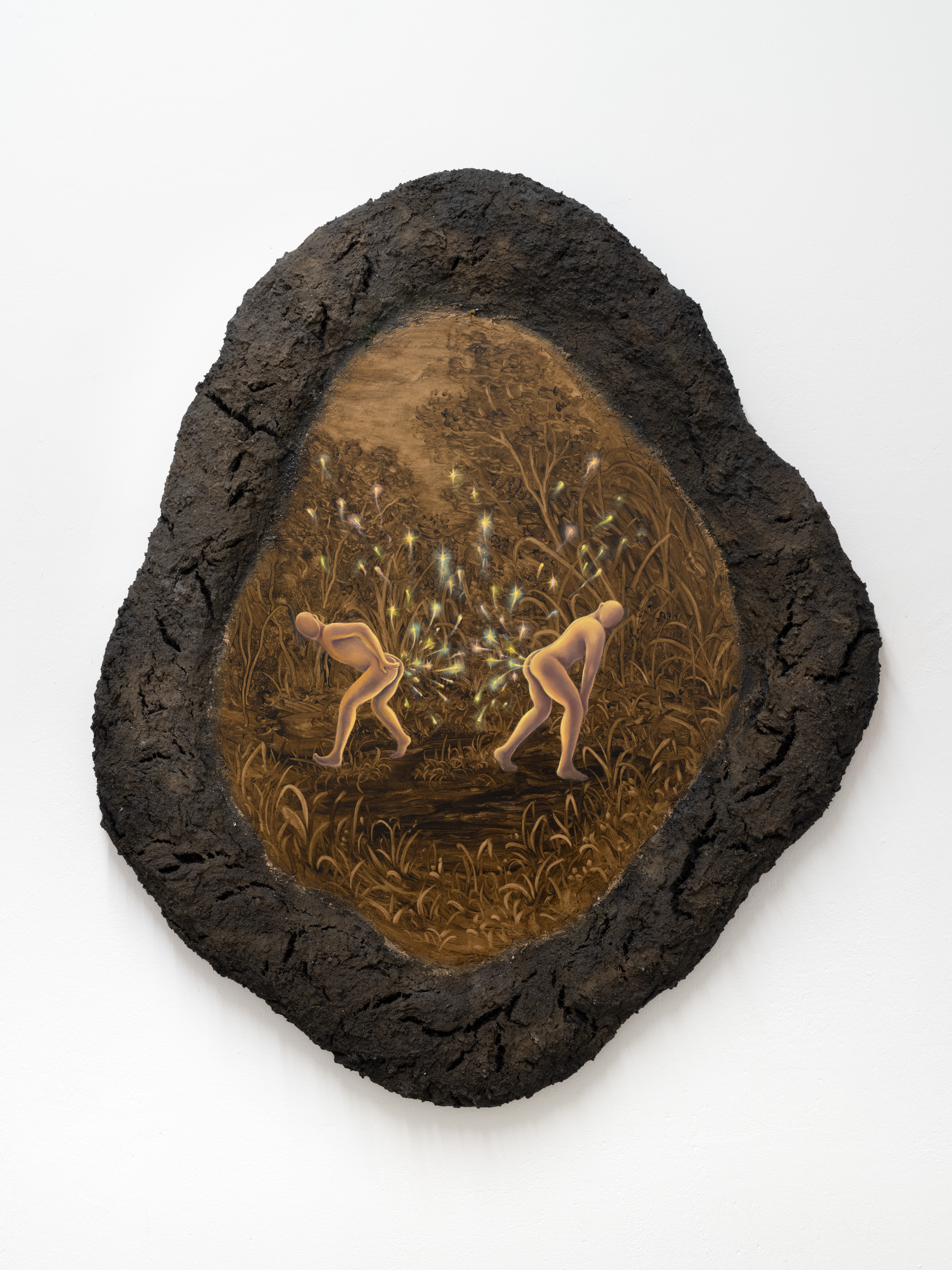
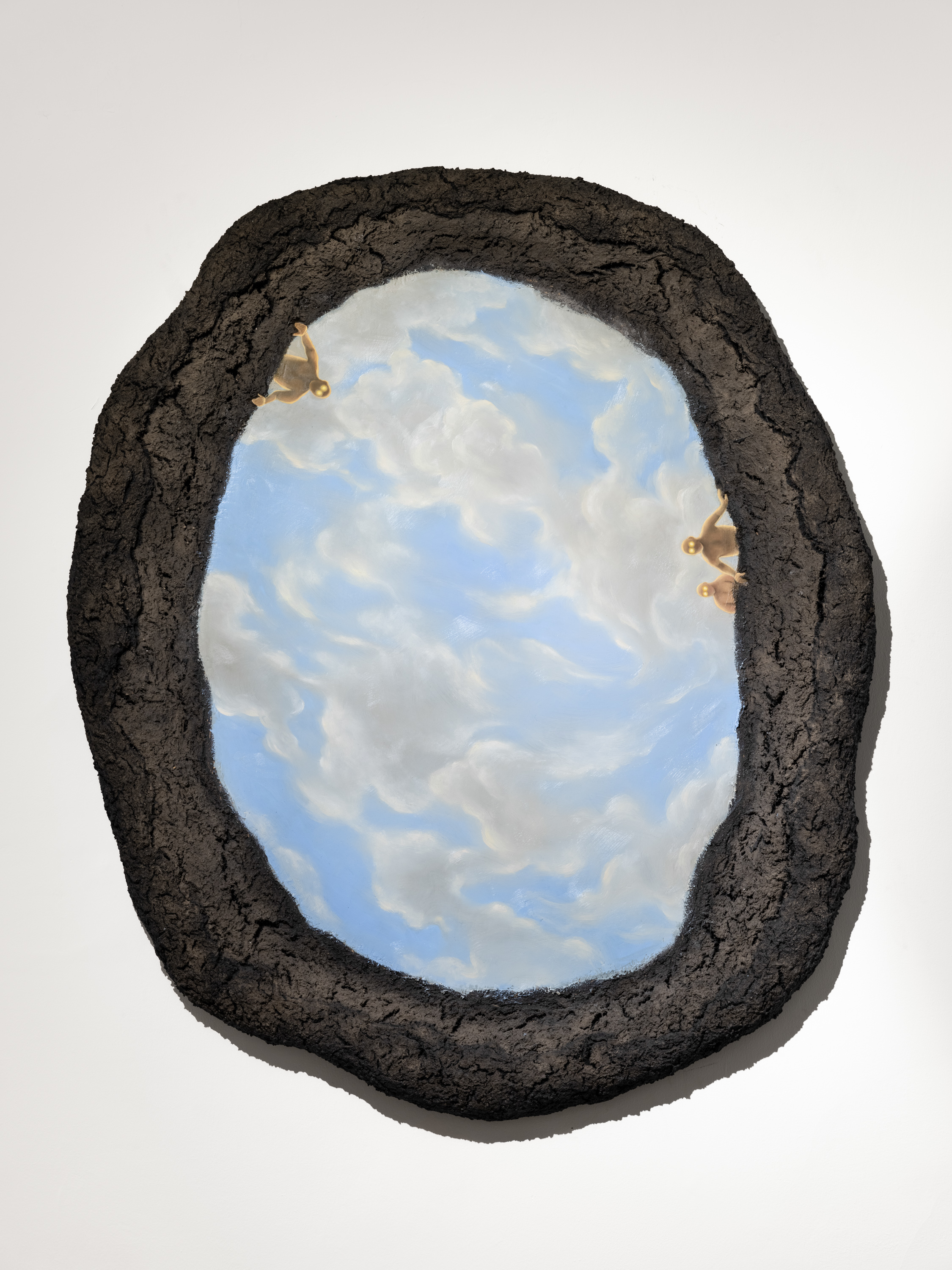
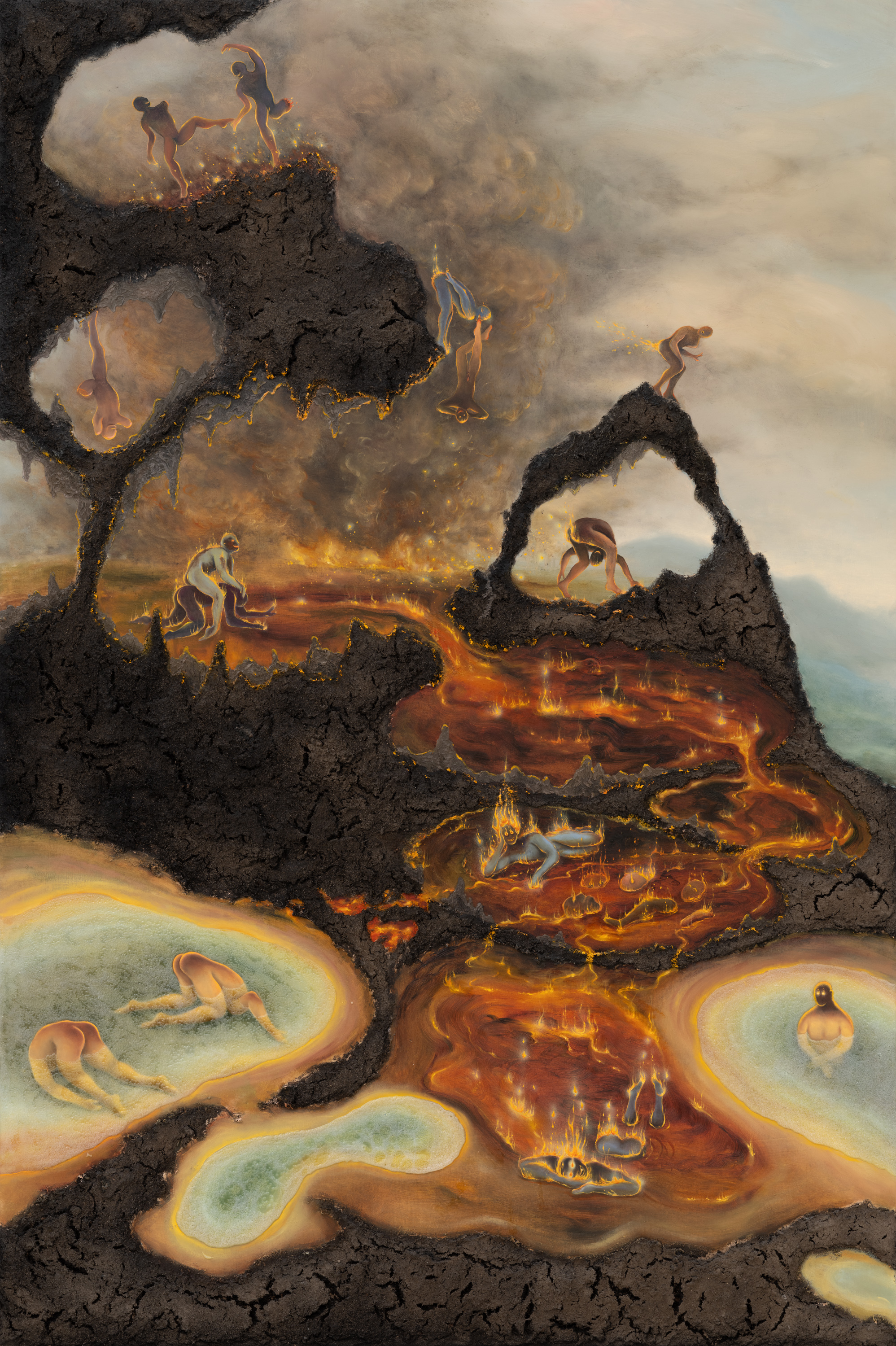

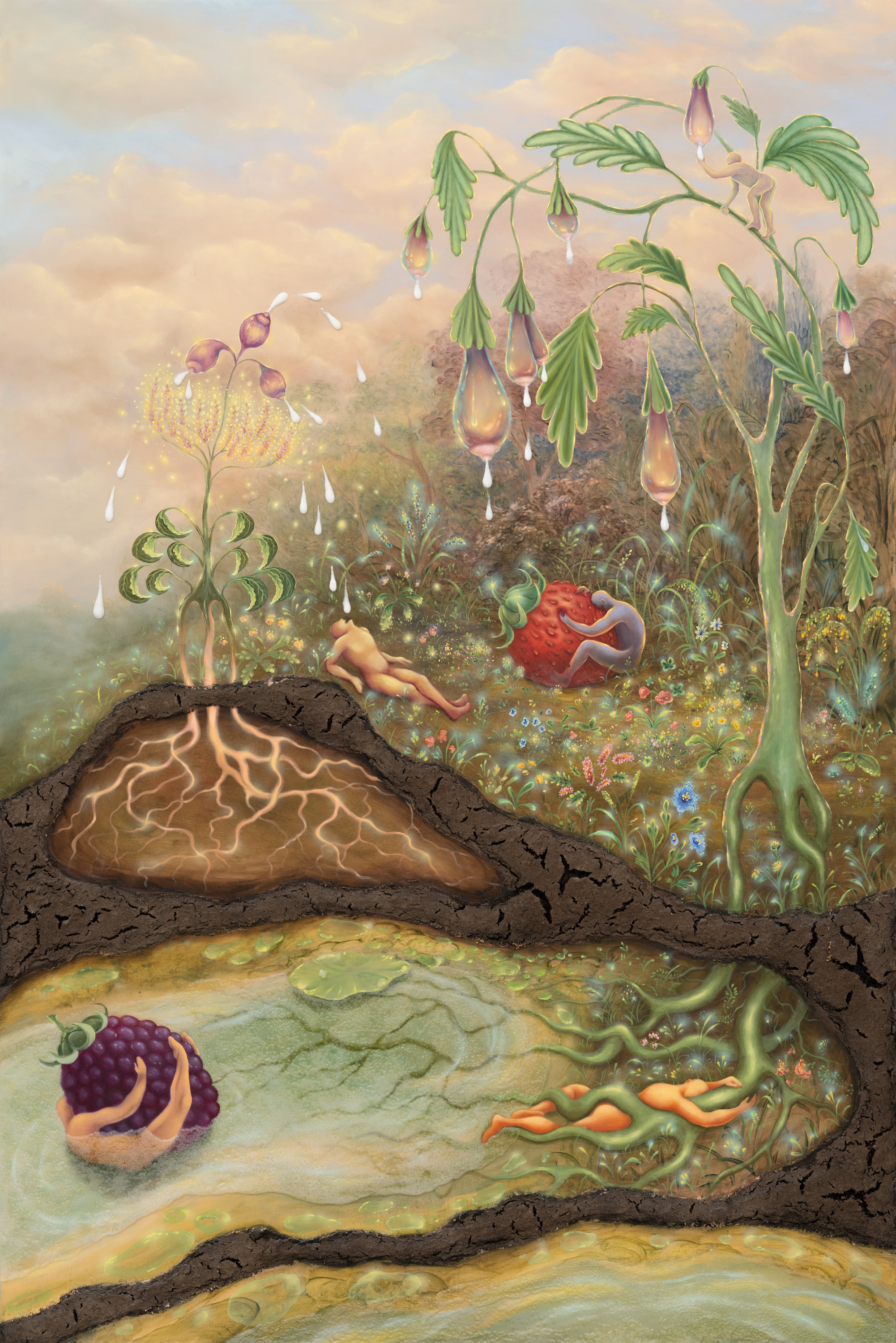
EN
Marcin Janusz, Milky Flesh
this flesh isso smooth, so milky,so unblemished, so good,so slippery, so handsome, so tender. Yet the time will come... when this flesh, dear boyish flesh, will be worthless... be notslow to yield to an eager lover (Marbodius, ok 1100 r.)
A thousand years of darkness. Our associations of the Middle Ages
span religious fanaticism, ignorance, stagnation, the Crusades, heretics burned at the stake, dogmas and superstitions. The trouble is that the notion of the Dark Ages themselves are an invention formulated by the Renaissance and the history that led to the revelations of the modern age. Devised to endow posterity with a sense of its own salvation. To get closer to the truth, one must consider the Middle Ages as a time of multiple ideas, brushing against each other, often at adds, fighting a subliminal battle, all the while co-existing in an equally valid balance. Paganism mixed with Christianity. Anatomy and biology filtering through into the folklore and the popular mindset. For one, pleasure wasn’t shunned. The body hasn’t even become so strictly tied to sexuality yet. And despite Foucault’s claim that sin is manifested through confession and redemption, bans on forms of sexuality and sexual repression come much later. Just as Foucault believed and John Boswell as well, these were just as another product of capitalism. Another way that politics take control of the truth.
Milky Bodies is not invested in broad, complex narratives. In fact, the artist never sought to create them in the first place. These Milky Bodies live beyond the system and the primary discourse. It’s vested in microhistories, anecdotes and legends, all of things that blow up the homogenic vision of the world and produces those coveted moments of respite. They are like drolleries, grotesque illustrations painted on the margins of illuminated manuscripts.
Illustrated with slapstick scenes and comically terrifying hybrids, little people mounted on penises and sticking out their buttocks, or bunnies quartering a Gothic knight and simmering them in a giant pan. Riddles, macabre imagery and abjection. These illustrations are often accompanied by notes from the scribes themselves: “the ink is watery” or “for God’s sake, let me have a drink.” In their world, no one is surprised to see a decapitated head reattach itself to the body, the hand of a hangman burning like a candle, a tree full of blooming penises, and an orchestra of flatulists, able to create a whole melody out of farts. These were the times when it was believed Earth was a giant block of cheese chewed through by worms, the soul was hammered to the body with tiny nails, and rotting hay was considered a symbol of political intrigue and romantic drama alike. Many dreamed of travel. For instance, to Cuccagna (the land of Cockaigne), a place of superabundance, full of joy and plenty, roasted pigeons and bridges made of sugar. Wine flows like water and sausages hang from the branches of trees. Here, there is no law, hierarchy, or morality. In yet we are not dealing with another world, just another map of it.
This is where bodies trade in their identities, juggling stories, drawing up parodies of the relationships among the political class, setting the world on a carnival stage. They shape their own versions of events and they are certainly queer, even if the term has not yet been coined. They don’t have any understanding of what it means exactly, they can’t quite imagine it. They talk about the words “gay” or “goya” as a way of ecstatically playing with language, joy and freedom, the way the troubadours did, brotherly associations of men who shared bread, wine and homo-erotic poetry written by monks in praise of the lovely, fragile bodies of their platonic cohorts. The monastery itself appears as the site of sexual freedom. After all, there’s a reason that Hieronymus Bosch’s Hay Wagon (as noted by Wilhelm Fraenger) is meant to be read as a trans experience of a social utopia. There’s also the artist’s Garden of Earthly Delights, fueled by the heretical rituals of naked Adams and Adamettes. These works were specifically commissioned by the clerics themselves. There must be a reason by Rabelais looked to the medieval legend of a giant eating the world for inspiration, where the utopia turns out to be the abbey itself. The grotesque Gargantua, whose insatiable appetite is a symbol of the critique of excess, revealing the hypocrisy of the ruling class, wins the war and builds Thélème. Only one rule presides: “Do as you like.” This is a place without any limitations or coercion. And, most interestingly, without walls.
Incidentally, the biblical tale of Sodom, before it became fodder for sexual repression, was primarily read in the context of seclusion and social isolation. Its key sin was not any sort of decadent immorality – it was the sin of inhospitality. As Gargantua says, it’s better for people to think I’m dead than for them to believe I’m hungry.
***
The exhibition goes beyond the Middle Ages per se and into the repressed and forgotten items scrawled into the margins. It’s built around the medieval imaginarium of sexuality, queerness and the grotesque.
It plays with the iconography of Christianity and heresy, the aesthetics of drollerie and illuminated codexes, the fascinating visions of Hieronymus Bosch. It cites the alchemical Voynich manuscript, devised by a sect of Adamites who celebrated the nakedness of Paradise in barns and caves, along with the biblical legend of Sodom, which became a symbol of systemic exclusion. Milky Bodies is not only a “queerification” of history, but an attempt to retrieve those other bodies and other pasts, specifically
the ones rubbed out on purpose by a system such as the one describe by Foucault, where the ruling class presides over who is allowe to survive, breaking through the illusory vision of a modern world.
The title of the exhibition is taken from a poem by Marbodius, whose desires were not cast as sinful. At least not yet. This medieval monk, who also served as the bishop of Rennes, would officially condemn sexual relations that were not aimed at procreation, and, at the same time, he let loose with his homoerotic fantasies in verse. He adored the male form and celebrated his own proclivities.
Text: Anna Batko
photo: Bartosz Górka